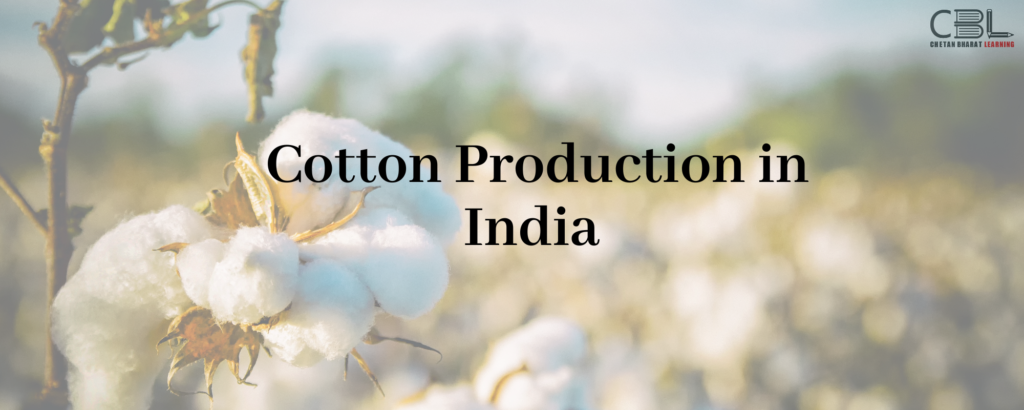Important for
Prelims: Geography & Environment
Mains: General Studies I

Cotton Production in India
Why in news?
- In recent years, cotton production and yields have declined significantly, posing a challenge for the country’s agriculture and textile sectors.
- As cotton is one of the most important commercial crops cultivated in India and accounts for around 25% of the total global cotton production, because of its economic importance in India, it is also termed as “White-Gold”.
- In India, around 67% of India’s cotton is grown on rain-fed areas and 33% on irrigated areas.
- Cotton cultivation necessitates a hot, and sunny climate with a long frost-free period. It is most productive in warm and humid climatic conditions.
- Additionally, Cotton can be successfully grown in a range of soil types, including well-drained deep alluvial soils in northern regions, variable-depth black clayey soils in the central region, and mixed black and red soils in the southern zone.
- Majority of the cotton production comes from ten major cotton growing states, which are grouped into three diverse agro-ecological zones, as under:
- Northern Zone: Punjab, Haryana and Rajasthan
- Central Zone: Gujarat, Maharashtra and Madhya Pradesh
- Southern Zone: Telangana, Andhra Pradesh, Karnataka and Tamil Nadu
Rapid Increase and Subsequent Decline in Cotton Production in India
- Between 2000-01 and 2013-14, India witnessed a remarkable surge in cotton production, primarily attributed to Bt (Bacillus thuringiensis) technology, designed to combat the American bollworm insect pest.
- However, the gains achieved through Bt technology were short-lived. Post-2013-14, cotton production and yields began to decline.
Decline
- The primary factor responsible for decline was the emergence of the pink bollworm.
- Unlike the polyphagous American bollworm, PBW is feeding mainly on cotton, which contributed to the development of resistance against Bt proteins.
Practice Questions for Prelims
A state in India has the following characteristics:
1. Its northern part is arid and semi-arid.
2. Its central part produces cotton.
3. Cultivation of cash crops is predominant over food crops.
Which one of the following states has all of the above characteristics?
a) Andhra Pradesh
b) Gujarat
c) Karnataka
d) Tamil Nadu
Ans. b)
Mains Practice Question
Discuss the impact of globalization on agricultural practices and food security in India. How have trade policies and technological advancements influenced the agricultural sector?




Leave a Reply
You must be logged in to post a comment.